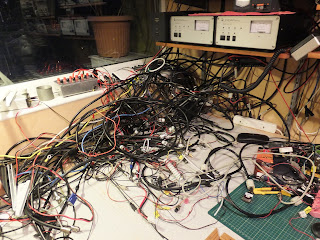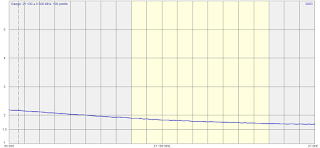Well,
I've concluded its tricky being DIY Dan whilst popping back and forth to Singapore. No matter how many times I travel, the distance and time zones do me in considerably!
The new shack is finally taking shape:
Some new bits n bobs too, new 'scope:
And also found this old Marconi Powermeter on my travels:
This was complete with waveguide to N-Type transition, attenuator and power head. A very nice addition to the test gear setup here. All I need to do now is learn how to use it!
Local conditions...
I've concluded its tricky being DIY Dan whilst popping back and forth to Singapore. No matter how many times I travel, the distance and time zones do me in considerably!
The new shack is finally taking shape:
Some new bits n bobs too, new 'scope:
And also found this old Marconi Powermeter on my travels:
This was complete with waveguide to N-Type transition, attenuator and power head. A very nice addition to the test gear setup here. All I need to do now is learn how to use it!
Local conditions...





















































